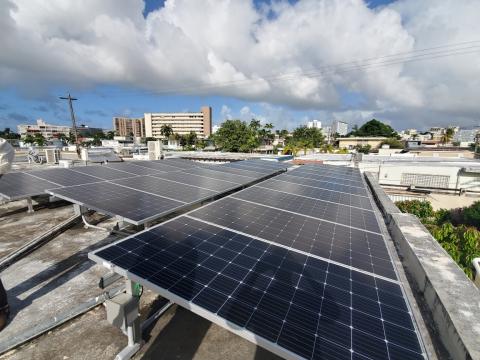IEEFA Update: Something in the Wind
It’s de rigueur anymore for energy companies across the board to play up their clean-energy commitments—actual or just advertised—but executives at American Electric Power put some of their money where their mouths were in announcing intentions last week to invest $4.5 billion in the new Wind Catcher farm in Oklahoma.
AEP’s logic is rooted in the deflationary nature of renewables. Costs are paid up front for the requisite “steel in the ground,” the requisite transmission lines, the requisite mechanics of integrating the power into the grid. The expenses are negligible from there. Upkeep on a wind turbine is relatively minimal and the fuel is free.
By comparison, as IEEFA’s Tim Buckley has often noted, fossil-fuel generation models are inflationary. They require huge up-front costs as well as ongoing high-dollar maintenance and of course they need to burn something that costs money, usually coal or natural gas.
Wind-powered electricity has emerged as the better bet, a fact that could not have been more openly acknowledged by the utility industry than when AEP Chief Executive Nick Atkins said this the other day: “While it appears $4.5 billion is a big number, if you built a central-station generation facility like a coal unit or something like that, it would be as big or bigger, but much more risky.”
Yet there is no dearth of opposition—political opposition—to the expansion of wind, as seen in campaigns of the sort being waged in North Carolina, where, “by far, the bigger challenge for wind energy advocates is the state Senate itself.”
The governor is all for developing the state’s wind industry, which is moving fast in recent construction of three wind farms that include a 104-turbine project owned by Amazon. But an influential senator has worked effectively to stop the industry in its tracks by way of a belligerent campaign that paints wind turbines as landscape Frankensteins that imperil public safety. Bigger threats than, say, gas refineries and coal fields, a line of reasoning that members of even that particular politician’s own party recognize for what they are, according to an article published yesterday by Southeast Energy News:
“‘I try to be respectful, but it’s poppycock,’ said Rep. Bob Steinburg, a Republican whose district includes the Amazon wind farm as well as the two farms underway.”
AFTER NEWS THIS WEEK THAT THE V.C. SUMMER NUCLEAR PROJECT IN NORTH CAROLINA IS BEING ABANDONED, DUKE ENERGY SAYS IT IS THINKING TWICE now about going forward with its plans to build new nuclear plants in the U.S., according to an item today in SNL, the energy-industry trade publication (the Charlotte Observer has more).
The proposed Levy Energy Complex in Florida and William States Lee III Nuclear Station each would generate about as much electricity as AEP’s new wind farm.
The Summer cancellation was noted with interest by IEEFA’s David Schlissel, who wrote that better-informed planning could’ve averted the loss of billions of dollars on that ill-conceived project and how its fate bodes ill for nuclear-power interests everywhere.
“A warning to the nuclear-power industry globally,” wrote Schlissel, who was on the record advising against the construction of Summer long before the builders even broke ground on it. Schlissel posted that column on Tuesday, and said in it that the only other active nuclear-energy project in the U.S., Southern Company’s Plant Vogtle in Georgia, was also at risk of abandonment.
The very next day came news that cost estimates to complete Vogtle had soared to $25 billion, almost 80 percent over original estimates, and that construction delays were piling up. The story echoed the refrain around Southern’s Kemper “clean coal” project in Mississippi, which had the regulatory plug pulled on it just last month.
WORD COMES THIS WEEK ALSO THAT THE KEYSTONE XL PIPELINE, LONG DELAYED BY LANDOWNER OPPOSITION, doesn’t pencil out anymore.
“‘It’s probably not going to be a going venture unless there’s a massive improvement in technology’ for processing Canadian crude,” one expert tells the Associated Press, noting that $50-per-barrel prices—which is where oil has stayed after topping $100 three years ago and where it is expected to remain for the foreseeable future—prevents Keystone XL from being viable.
IEEFA’s Tom Sanzillo said as much in a Newsweek op-ed seven months ago.
IEEFA’s Cathy Kunkel has warned too on the financial feasibility of the Dakota Access Pipeline, which is moving oil finally after a long series of standoffs, but for how long?
Karl Cates is IEEFA’s director of media relations.
RELATED POSTS:
IEEFA Update: The U.S. Nuclear Project Cancellation Announcement Heard ’Round the World
IEEFA Op-Ed: Investors Should Steer Clear of the Keystone Pipeline
IEEFA Analysis: The Economic Frailties and Rickety Finances Behind the Dakota Access Pipeline











